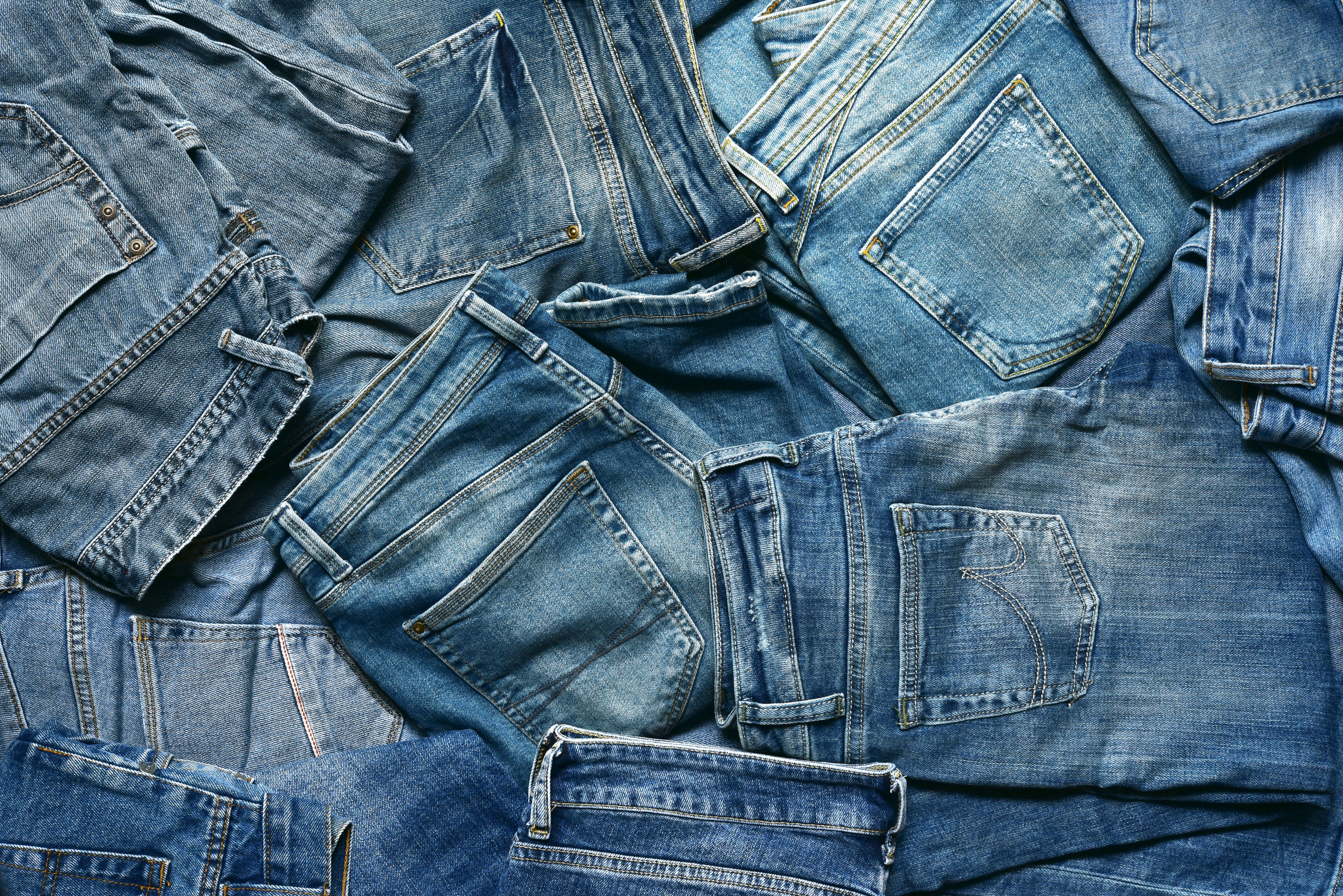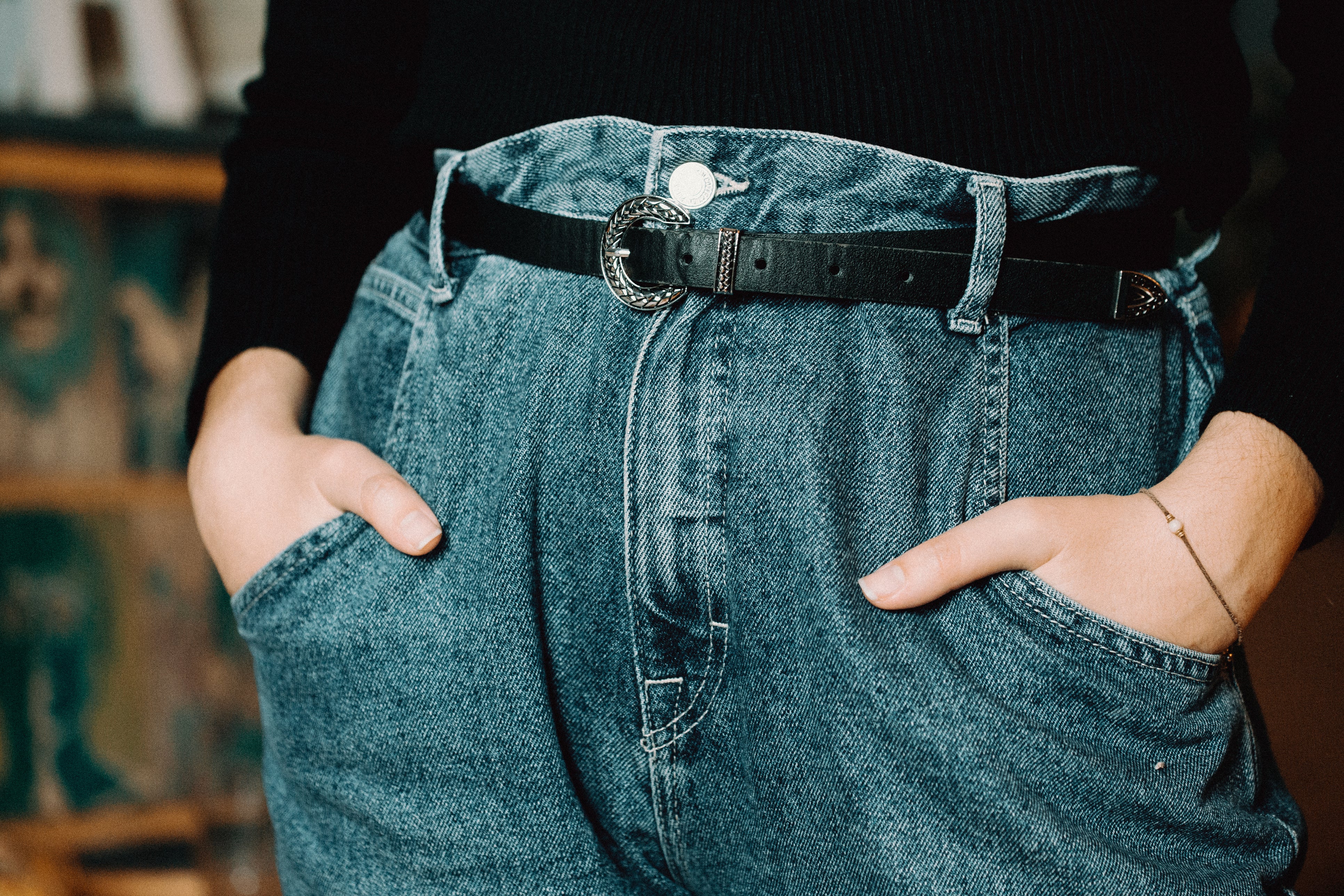The Independent's journalism is supported by our readers. When you purchase through links on our site, we may earn commission.
The story of denim: Is it going through an identity crisis?
These days, new styles of jeans emerge and recycle at dizzying speed. So fast, in fact, that sometimes they seem not to move at all, writes Haley Nahman

What kind of jeans are in right now? A trendy young person may say low slung and baggy, while their older sibling asserts the opposite. Ask industry experts and they would probably tell you skinny jeans, with data to support the point.
But set foot in any store where denim is sold, and you’ll find among the racks a panoply of silhouettes and styles: mom, dad, boyfriend, girlfriend, skater, stovepipe, 1990s, sculpted, cigarette, puddle, patchwork, contrast, slim, split. The question of what’s stylish may be better formulated in the negative: what isn’t?
The trend cycle is said to complete its journey every 20 years, and while there’s some truth to that — low-rise jeans, for instance, haven’t been popular for about as long — the adage is starting to sound dated. These days, new styles emerge and recycle at dizzying speed. So fast, in fact, that sometimes they seem not to move at all, like a colourful spinning wheel transformed into a blur of brown: everything relevant at the same time.
Such a landscape, where nothing is “in” or “out” so much as chosen or not, presents some clear wins for fashion as a form of self-expression. But what else may the smorgasbord of jeans being sold today say about this moment in history? Denim, after all, has always been a cultural weather vane.
Jeans for you (and you and you)
Classic jeans as we today know them — stiff, pocketed, blue — were patented by Levi Strauss and Jacob Davis in 1873. For decades they were worn primarily by labourers and amended to meet their needs: extra stitching for reinforcement, copper rivets to keep the pockets from ripping off, belt loops and zippers for ease of wear.
It wasn’t until the 1920s and 1930s that jeans shed their strictly utilitarian associations. By borrowing the so-called edge implied by the garment’s class associations, Hollywood cowboys such as John Wayne and Gary Cooper lent denim an air of romanticised rebellion. Trace the history of American denim over the hundred years that followed and you get a rough sketch of 20th-century iconoclasts: greasers, hippies, rock stars, rappers and hipsters.
Plus-size shoppers have a long way to go before their access reflects that of straight-size shoppers — evidence, no doubt, of pervasive fat-phobia
This century has had its share of denim-clad cultural figureheads, but aside from the occasional office dress-code ban, jeans have mostly lost their subversive associations. Everyone wears them.
E-commerce changed the game. As Lorraine Hutchinson, a retail analyst for Bank of America, put it: the ability to manufacture new styles and test them in the market requires far less financial risk today than it ever has. So why limit the options?
Several rapidly growing retailers seem to have made this their entire business strategy: Shein, a fast-fashion brand popular with Gen Z, has advertised that it adds some 1,000 products to its website every day — a staggering figure that has drawn concern from climate and labour activists. (On Wednesday, there were more than 6,600 styles of women’s jeans available.)
Despite lofty pronouncements about sweatpants overtaking “hard pants”, the worldwide denim market is only getting bigger. According to Global Industry Analysts, it was worth more than £45bn in 2020, and it’s projected to grow another £15bn by 2026. That leaves us where we are now: every style of jeans we could possibly dream of, available effective immediately.
Is more really more?
“Personal” style, as opposed to trend based, is a popular idea today, perhaps because it suggests a kind of social progress — a movement toward a world in which fashion is inclusive, accessible and less dogmatic. That is an especially appealing proposition for consumers who feel ignored by most of the retail market.
Lauren Chan, a model and size-inclusive advocate, said that when consumers can’t find well-made, stylish clothes for their bodies, “the message they receive is that they aren’t worthy of that”. Which is why, in 2019, she founded Henning, a clothing line for sizes 12 and above.

Unlike, say, Shein, where more is more, Chan is in the business of essentialising: providing access to high-quality staples, versus access to everything. (For spring, she’s introducing just a single denim jeans design: a stiff, vintage-inspired straight-leg pair.)
“The plus-size market is largely made up of pieces that are semi-trendy, watered-down versions of what fashion at large has been offering for the past year,” Chan said, “because plus-size fashion is often a little bit late to adapt to those trends.”
Plus-size shoppers have a long way to go before their access reflects that of straight-size shoppers — evidence, no doubt, of pervasive fat-phobia. But in the long run, it may be worth asking whether having virtually infinite choices — and infinite trends — actually reflects the average shopper’s ideal.
In his 2004 book, The Paradox of Choice, psychologist Barry Schwartz proposed that while freedom of choice is crucial to our well-being, having too many choices makes us anxious.
But the pursuit of personal style as the singular apex of fashion may be taking this ethos too far, and the way it’s currently metabolising has alarming environmental effects
“Though modern Americans have more choice than any group of people ever has before, and thus, presumably, more freedom and autonomy, we don’t seem to be benefiting from it psychologically,” he writes.
In a recent study (now under peer review), he and his research associate Nathan Cheek explored a new hypothesis, which Schwartz explained by phone: “When you give people choices from large choice sets, even trivial choice sets, like what kind of drink they’d like, they treat the choice as a statement about who they are.”
As someone who loves clothes, I don’t need his research to know that what he proposes is true for many: the overwhelming opportunities to express ourselves aesthetically are both a gift and a curse, capable of inciting joy as much as dread.
Georg Simmel, said to have publicised one of the first official “theories of fashion” in 1895, believed that fashion is defined by the push and pull between the desire to conform and the desire to distinguish oneself.
This tension, he said, is critical.
“Fashion exists only insofar as one of the two poles does not ultimately prevail in the end,” Sergio Benvenuto, an Italian psychoanalyst, wrote on Simmel’s theory.
This may be why, as Anna Wintour once put it, “Fashion can make people very nervous.” To get dressed is to walk a tightrope with ourselves at one end and everyone else on the other.

‘The lack of trend is the trend’
Katrina Klein has been designing jeans for nearly 20 years — for J Brand, Rag & Bone and now her own label, ASKK NY. She remembers vividly every microtrend she’s witnessed: colourful, patterned, embroidered, destroyed, whiskered. Right now, she said, “The lack of trend is the trend.” And she doesn’t think that’s a bad thing.
“People don’t really want to be dressed the same as everybody else,” she said.
Individualism: it seems like an almost too obvious place for this inquiry to land. As modern technology continues to provide access to abundance while driving us into increasingly isolated corners of existence, it makes sense that fashion — famously a reflection of the zeitgeist — would follow a similar trajectory.
But the pursuit of personal style as the singular apex of fashion may be taking this ethos too far, and the way it’s currently metabolising has alarming environmental effects.
“Just because fashion and consumerism overlap does not mean they are synonymous,” Drew Austin, a writer who covers urbanism, technology and social change, said in an interview last month. “Every culture throughout history has used clothing to express itself, and doing so is arguably even more important in cultures and subcultures where fashion is less captured by consumerism — where it best performs its role as a communication medium and an enhancer of public space.”
“Wear it your way” imbues clothing with a social purpose outside the language of status. But as a whole-cloth fashion philosophy, it has clear costs. Unlimited choice is no fashion utopia: not for consumers, not for garment workers or supply chains, and not for the planet. One thousand styles of jeans, in other words, will not save us.
Constraints, on the other hand, can present a creative opportunity, Schwartz said: “They’re exhilarating in a way that simple novelty could never be.”
This article originally appeared in The New York Times.




Join our commenting forum
Join thought-provoking conversations, follow other Independent readers and see their replies
Comments